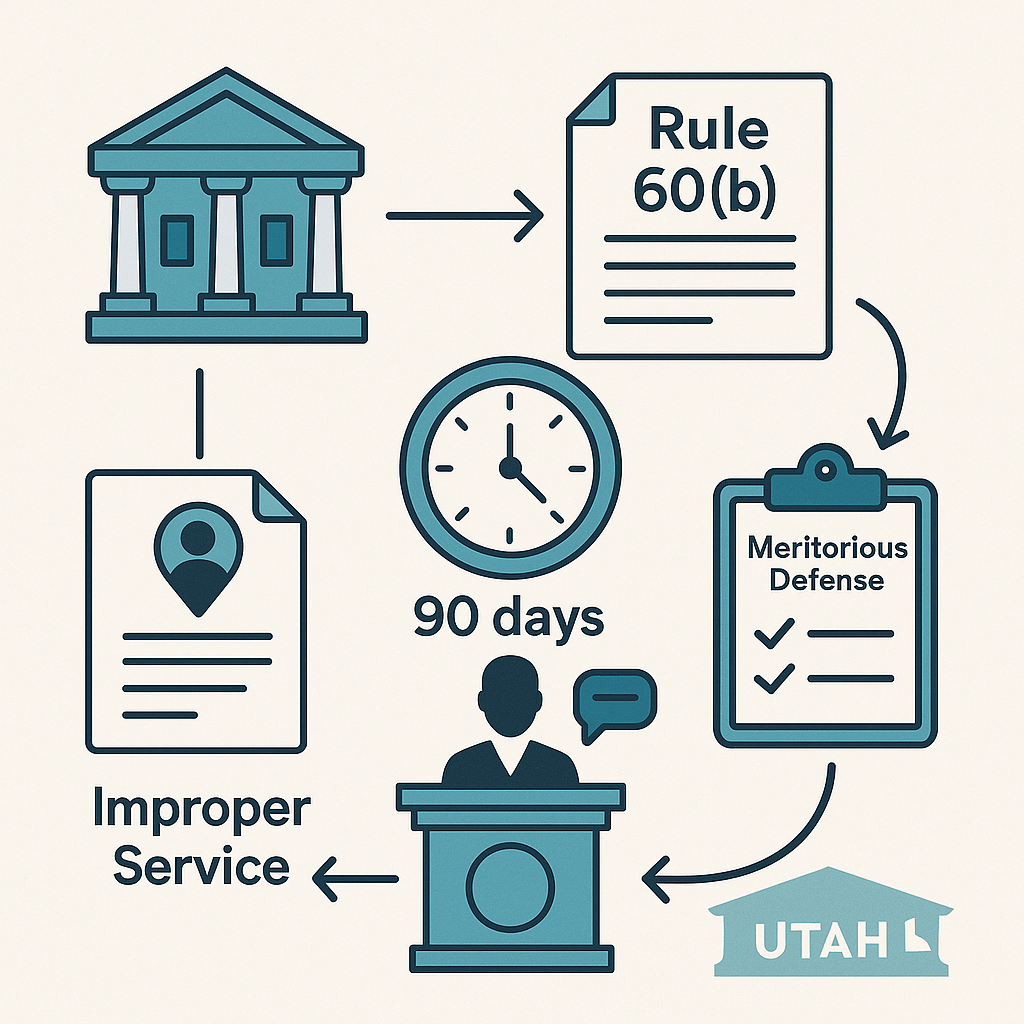How Do I Set Aside (Vacate) a Default Judgment in Utah?
Plain-English guide to Rule 55 and Rule 60(b), timing, defenses, and what happens after a judge grants relief
Utah law lets you ask the court to set aside a default judgment under specific rules and tight timelines. If you missed the lawsuit and a judgment was entered, there may still be a path to reopen your case. You need to move fast and show the right legal grounds. This guide explains when a set-aside is possible, how to draft the motion and affidavit, and what to expect at the hearing.
When a Set-Aside Is Possible
Default judgments in Utah are governed by Utah Rules of Civil Procedure 55 and 60(b). The court can relieve a party from a final judgment for reasons like mistake, surprise, excusable neglect, lack of proper service, fraud, or other misconduct.
- You were never properly served with the complaint.
- You missed the deadline due to a reasonable mistake or excusable neglect.
- The plaintiff made a procedural error that affected fairness.
- There is proof of fraud, misrepresentation, or other misconduct.
A default will not be vacated just because you ignored the lawsuit. You need a valid ground under Rule 60(b).
Time Limits and Standards
Timing is critical.
- Mistake, neglect, or new evidence: File within 90 days after learning of the judgment.
- Improper service or void judgments: No hard limit, but act promptly once you discover the problem.
- Any other reason: File within a reasonable time.
If you wait too long, the court can deny the request even if your reason is otherwise valid.
Drafting the Motion and Affidavit
A solid filing usually includes:
Meritorious Defense Requirement
Courts usually want to see a meritorious defense, meaning a real argument that could change the outcome if the case is reopened. You do not need to prove you will win. You need to show the case is worth reopening.
- You already paid the debt, but the record is wrong.
- The wrong party was sued.
- The claim is barred by the statute of limitations.
The Hearing and Possible Outcomes
After filing, the court may set a hearing. Be ready to explain your grounds and walk the judge through your affidavit and exhibits. The judge weighs:
- Your reason for default.
- How quickly you acted.
- Whether you have a valid defense.
- Any prejudice to the other side.
If granted, the judgment is vacated and the case restarts from the beginning. If denied, the judgment stands and collection can continue.
Restarting Your Case
If the default is set aside, file your Answer or other required pleading right away. Put your defenses on the record and calendar all deadlines. Keep proof of filing and service.
Video & Social Learning Hub
YouTube: Vacating Default Judgments
Instagram: Utah Court Process Insights
Need Help Applying This to Your Situation?
Default judgments can feel final, but Utah rules give you a real chance to fix the record if you act fast and show good cause. If you are unsure whether your facts qualify, it can help to speak with a Utah attorney.
Talk to a Utah AttorneyFor more plain-English legal guidance, stay updated with Utah Law Explained, explore our mission on the About Us page, or connect with trusted counsel like Gibb Law Firm.
